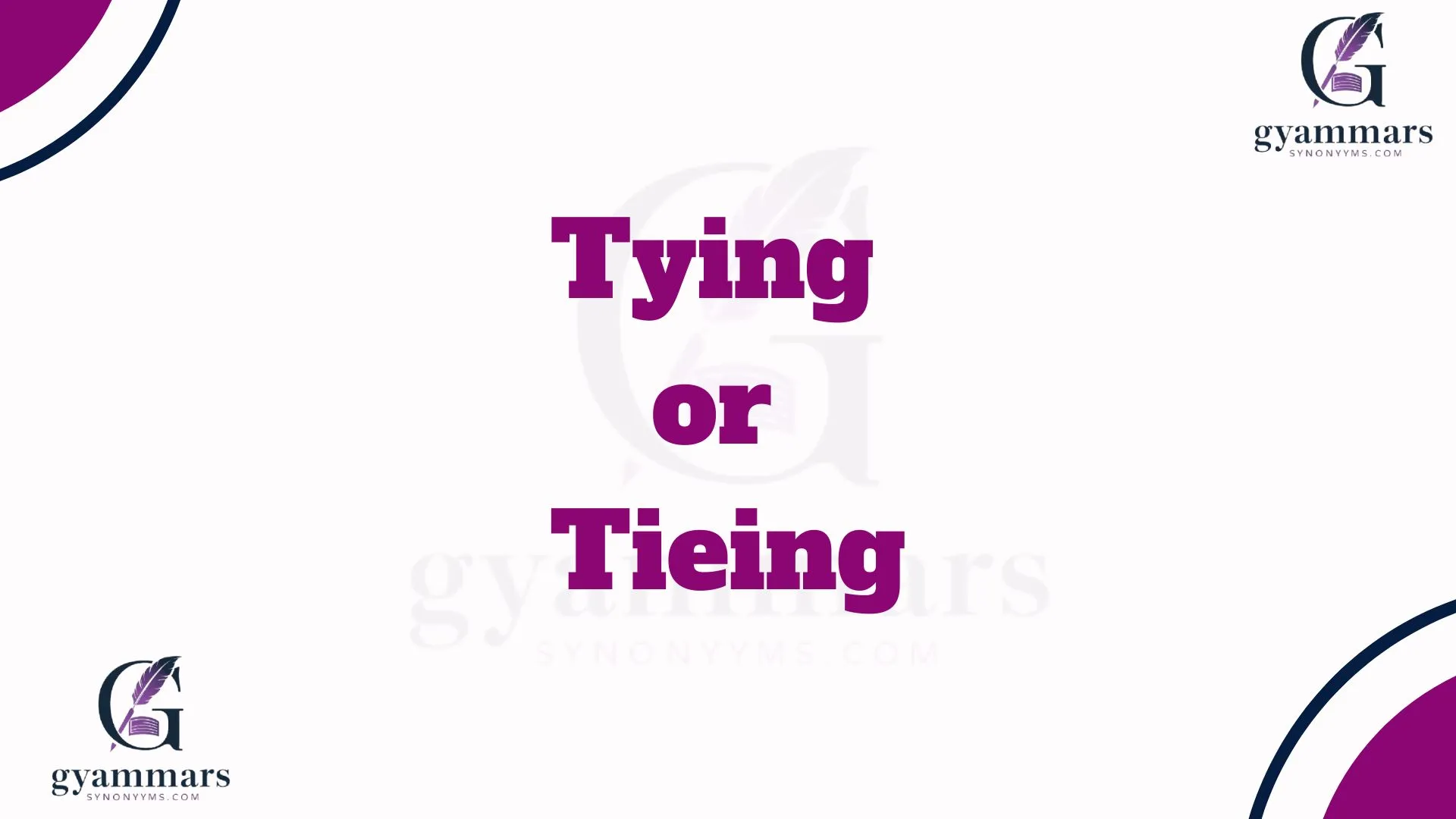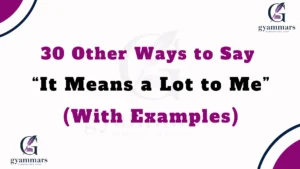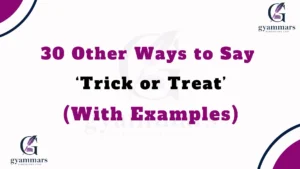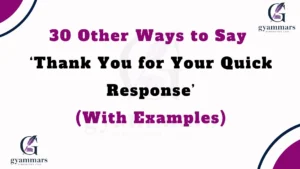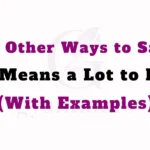In the world of writing, few things trip up even the most confident writers like spelling inconsistencies. One word that often raises eyebrows is the verb form of “tie.” You’ve probably seen “tying” and maybe even “tieing.” So which one is correct? More importantly, why is one right and the other wrong?
Understanding the difference is more than just academic. Spelling mistakes, especially the ones that look like they could be correct, can create confusion and impact how readers perceive your attention to detail.
Whether you’re writing for business, academia, or even just texting a friend, getting this small detail right says a lot.
In this article, we’ll break down everything you need to know—clearly, practically, and without the fluff. You’ll walk away not just knowing the correct spelling, but also understanding the grammar behind it, with tips and examples to help you remember it for good. Spoiler alert: “tying” is correct—but we’re going to show you why.
Understanding the Confusion
Why Do People Think “Tieing” is Right?
English has a ton of quirky spelling rules, and they don’t always follow the logic you expect. Most of us are taught from an early age to just add “-ing” to a verb to make the present participle:
- run → running
- play → playing
- jump → jumping
So naturally, people assume “tie” becomes “tieing.” The pronunciation is the same, so why not?
But here’s where English throws a curveball: verbs ending in “-ie” don’t follow that pattern.
The Role of Phonics
To make matters worse, “tieing” sounds right when you say it out loud. If it sounds right and looks kind of right, your brain fills in the blank. But spelling and pronunciation often don’t match up in English (we’re looking at you, “colonel”).
The Correct Spelling: “Tying”
Let’s be crystal clear: “tying” is the only correct present participle of the verb “tie.” That means any time you’re using “tie” in a sentence where something is actively being done—like tying shoes or tying a knot—“tying” is the word you need.
The Grammar Rule That Explains It All
Here’s the actual grammar rule from standard English:
When a verb ends in “-ie,” you replace the “ie” with “y” before adding “-ing.”
This isn’t unique to “tie.” You see this pattern in several other common verbs:
- die → dying
- lie → lying
- vie → vying
So:
- ❌ tie + ing = tieing (Incorrect)
- ✅ tie → ty + ing = tying (Correct)
Why Do We Drop the “e” in “Tie”?
It’s a matter of pronunciation. Adding an “e” before “ing” often creates an awkward diphthong that makes the word clunky to say. Switching “ie” to “y” smooths it out. That’s why we say “tying” and not “tieing.”
“Tieing” in Historical Usage
You might come across “tieing” in older texts or outdated websites. That doesn’t mean it’s correct today. English is a living language, and its rules have evolved over time.
Did “Tieing” Ever Have a Place?
Technically, yes—but only loosely. You’ll find “tieing” in certain texts from the 18th or 19th century, mostly where spelling rules weren’t yet standardized. Even in those cases, it was rare.
Today, style guides like Merriam-Webster, Oxford English Dictionary, and AP Stylebook all recognize only “tying” as correct.
Does That Mean “Tieing” Is Wrong?
Yes. According to modern grammar and professional writing standards, “tieing” is considered a misspelling. Using it will look like a typo or a basic language mistake.
Examples of Correct Usage: “Tying” in Action
Let’s ground this in reality. Here are real-life examples where “tying” is used correctly:
- “She was tying her hair back before the jog.”
- “I’m tying the balloons together for the party.”
- “He’s tying up loose ends at work before vacation.”
- “They were tying ribbons on every gift.”
Each of these sentences flows naturally and follows standard grammar. Use them as a template for your own writing.
Incorrect Usage: Examples of “Tieing”
Let’s contrast that with what not to do. Here are examples that use “tieing,” all of which are grammatically wrong:
- “Tieing her shoes was a daily struggle.” ❌
- “He was tieing the boat to the dock.” ❌
- “They are tieing up their tasks for the week.” ❌
Even though your spell-check might not catch these (some older word processors allow “tieing”), they’ll jump out to human readers—especially those with editorial or academic backgrounds.
How to Remember the Right Form: Tying vs. Tieing
Need a trick to keep it straight? Here are a few.
Mnemonic Trick:
“When verbs end in ‘ie’, drop it and add a ‘y’ before adding ‘ing’.”
Try this:
- Tie ➝ Drop the ie
- Add y ➝ Ty
- Add ing ➝ Tying
Chart for Quick Reference:
| Base Verb | Present Participle | Correct? |
| tie | tying | ✅ Yes |
| tie | tieing | ❌ No |
| die | dying | ✅ Yes |
| lie | lying | ✅ Yes |
| vie | vying | ✅ Yes |
Stick this chart near your workspace if spelling slips are a regular issue.
When “Tying” Is More Than Grammar
In pop culture, business, and even sports, “tying” has symbolic and literal uses:
- “Tying the knot” – a common phrase for getting married.
- “Tying a score” – used in sports.
- “Tying loose ends” – finishing unresolved matters.
In each of these cases, using “tieing” would be incorrect. That simple spelling mistake could change the tone of a headline, slogan, or brand message.
Conclusion
Let’s clear the air once and for all—when you’re writing the present participle of the verb “tie,” the only correct spelling is “tying.” While “tieing” might look logical at first glance, it doesn’t follow English grammar rules and is considered a spelling error in today’s language.
The rule is simple but powerful:
If a verb ends in “-ie,” replace it with “y” before adding “-ing.”
This applies not only to “tie” but also to verbs like “die,” “lie,” and “vie.” Knowing and applying this rule shows command over the language, enhances your writing’s credibility, and prevents the kind of mistakes that can make even solid content look careless.
Whether you’re writing emails, academic essays, blog posts, or social media captions, mastering these small details goes a long way in building trust, authority, and clarity with your readers. So next time you’re tempted to write “tieing,” remember: “tying” is the word you’re looking for.
FAQs: Tying vs. Tieing
1. Is “tieing” ever correct in any context?
No. “Tieing” is not considered correct in modern English. While it may appear in some very old texts or niche usage (like outdated signage or technical errors), it is not accepted by any major dictionaries or grammar guides today.
2. Why isn’t “tieing” correct if it sounds right?
It’s a common misconception due to pronunciation. Even though “tieing” sounds similar to “tying,” the correct form follows a spelling rule:
Drop the “ie” and replace it with “y” before adding “-ing.”
3. Are there other words like “tying” with the same rule?
Yes. Here are a few:
- Die → Dying
- Lie → Lying
- Vie → Vying
All of them follow the same rule: replace “ie” with “y” before adding “ing.

“Emma Brooke at Grammar Synonyms is your trusted source for mastering the art of language. Whether you’re looking for the perfect synonym, refining your grammar, or searching for that one ideal phrase, we’ve got you covered. With a wealth of tools and resources, Emma Brooke brings you creative solutions for all your writing needs, making sure your words always hit the mark. Unlock a world of language possibilities and elevate your writing with ease.”
